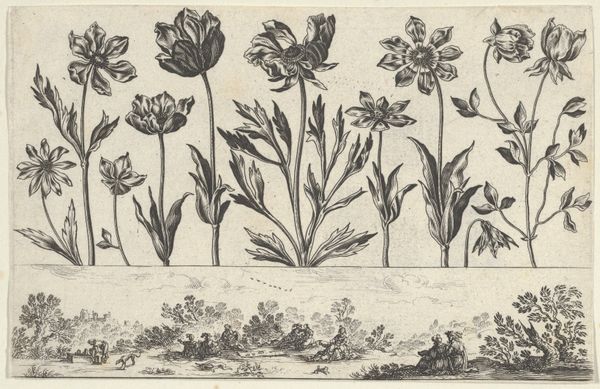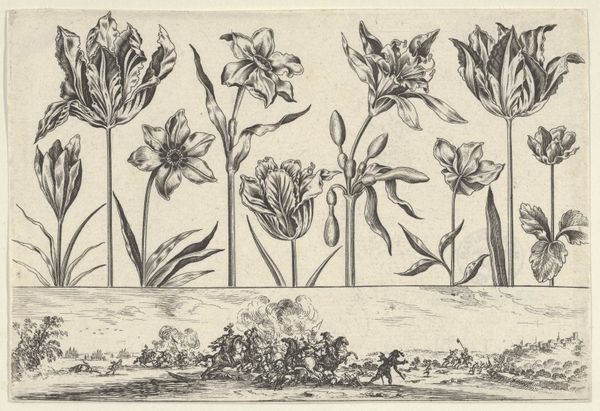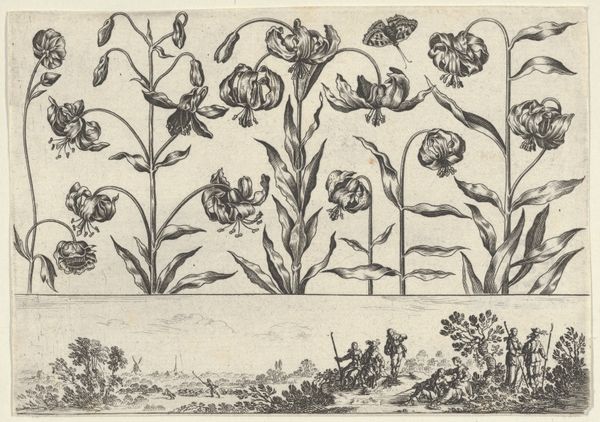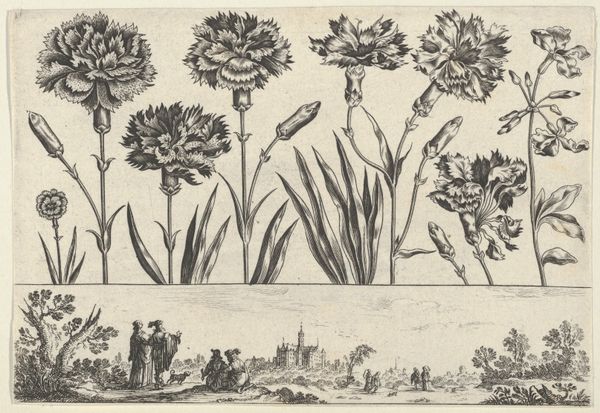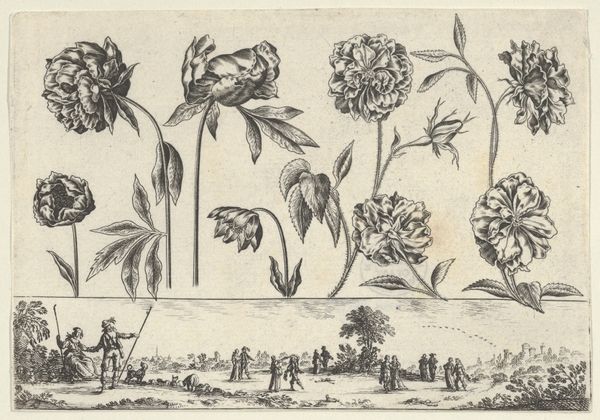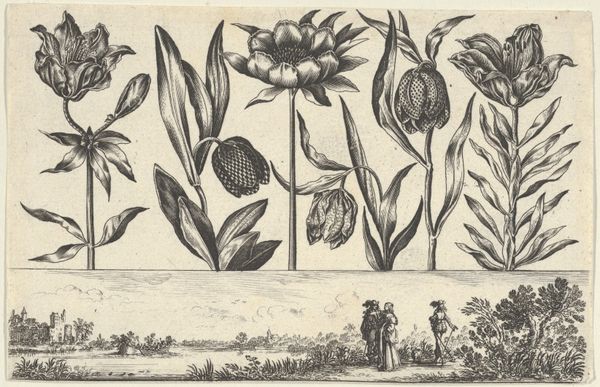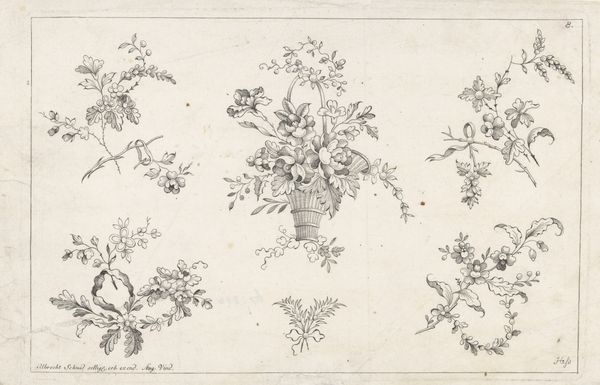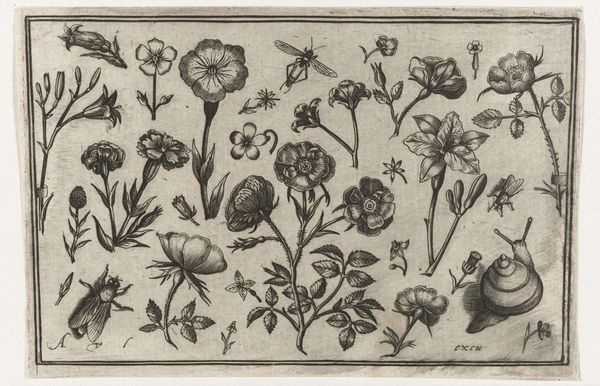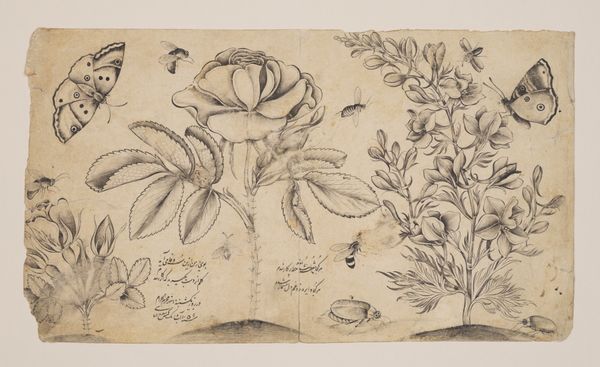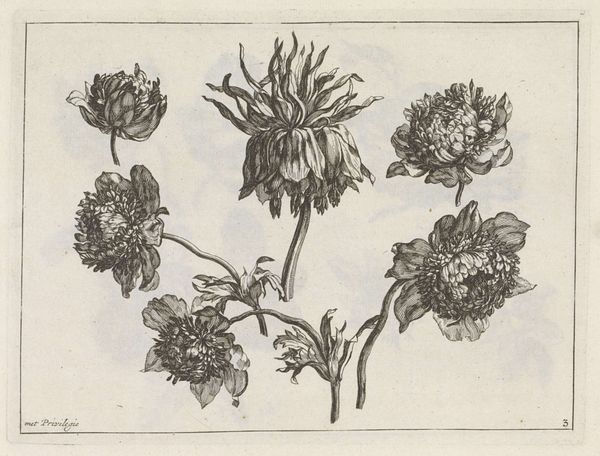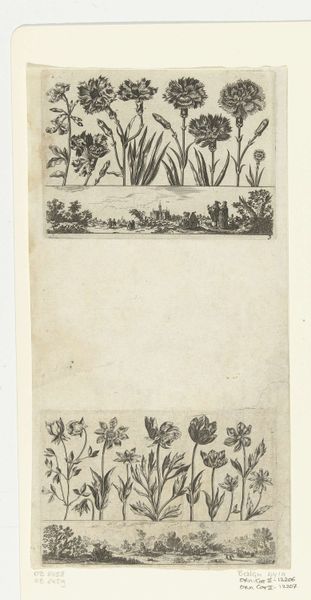
Horizontal Panel with a Row of Flowers Above a Frieze with a Battle Scene in a Landscape, from Livre Nouveau de Fleurs Tres-Util 1645
0:00
0:00
drawing, print, etching, engraving
#
drawing
# print
#
etching
#
landscape
#
figuration
#
line
#
history-painting
#
engraving
Dimensions: Sheet: 3 1/8 × 4 7/16 in. (7.9 × 11.3 cm)
Copyright: Public Domain
Curator: This is Nicolas Cochin's "Horizontal Panel with a Row of Flowers Above a Frieze with a Battle Scene in a Landscape, from Livre Nouveau de Fleurs Tres-Util," created in 1645. It's currently housed at the Metropolitan Museum of Art. Editor: My immediate reaction is one of striking contrast. The delicacy of the flowers juxtaposed against the chaos of battle is quite jarring. Curator: Exactly. And consider that this is an etching, engraving and print; its production depended on artisans skilled in metalwork, on workshops capable of turning out multiples, all for what amounts to a luxury product at that time. These images circulated among a specific class, which shapes our understanding too. Editor: I agree, but on a more immediate level, look at how the strong lines define the forms of both the botanicals and the soldiers. The flowers possess this incredible level of detail. Yet below, the artist captures movement and dynamism. What visual devices are used to signal action in a static medium? Curator: That detail is part of Cochin’s commercial appeal. He, among other printmakers, served an expanding market keen to stay abreast of the fashions and to decorate domestic space; this aesthetic, however decorative, was sustained by labor. The print participates in systems of knowledge and power. Editor: True, and yet consider the symbolism embedded within this specific arrangement. The flowers, symbols of beauty and ephemerality, are placed directly above a brutal scene of conflict. It’s a visual metaphor, isn’t it, for the fleeting nature of power and the persistent presence of beauty even amidst chaos? Curator: The floral patterns themselves gain symbolic weight, considering the era's complex relationship to botany and global trade. Who cultivated the gardens, and where did these flower types originate? That kind of social detail speaks to how visual prints helped in shaping knowledge during colonial eras. Editor: Ultimately, I return to the power of composition here. It achieves something beyond just its historical context. Its formal arrangement invites, really demands, a certain level of contemplative reflection. Curator: It encourages one to delve beyond the pretty façade, to consider how such artistry and its creation reflected profound social inequalities. Editor: Precisely, which then heightens the emotional complexity when we, centuries later, simply admire this piece's arrangement.
Comments
No comments
Be the first to comment and join the conversation on the ultimate creative platform.
